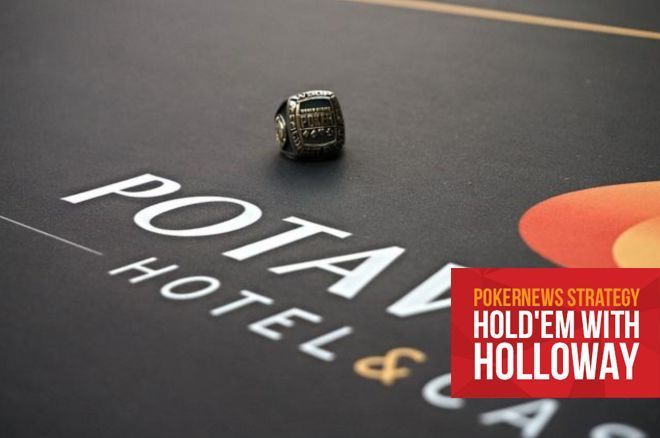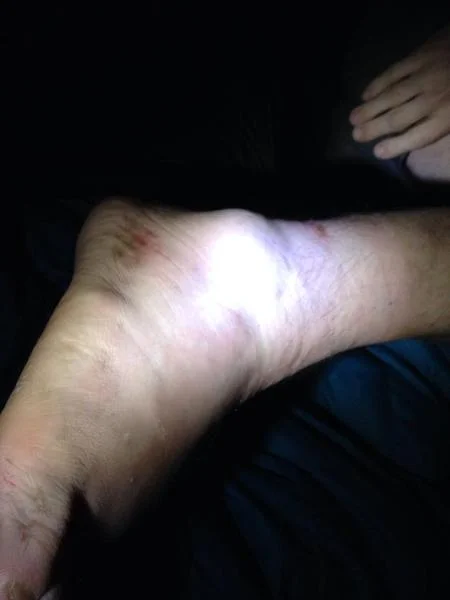Potawatomi Bad Beat
In poker, bad beat is a subjective term for a hand in which a player with what appear to be strong cards nevertheless loses. It most often occurs where one player bets the clearly stronger hand and their opponent makes a mathematically poor call that wins with any subequent dealing to complete. Potawatomi Poker Bad Beat heavier on the side of slots titles, in which case you will find these real money sites to Potawatomi Poker Bad Beat your liking: For many players, it is just nice to be able to Potawatomi Poker Bad Beat find all the games they could possibly want in one location, saving the time needed to create new accounts all over. This site needs to be updated. They no longer have $2-$4 and you can only call in an hour in advance now instead of 2 hours. They offer a bad beat jackpot that at times gets extremely large. MASKED BLONDE BEATS UP BAD GUYS - beat, up, masked - Download pornhub sex free videos, x24 mobile porn, mobile porn xxx 24, 3gp xxx porn video, indian pornhub xxx videos, homemade videos xxx sex. The casino has a wide range of restaurants (Asian, steakhouse, Italian, food court, etc.) but no regular table side food service. Drink service is really slow in the room. Players in the room are better than average, but still plenty of loose money to make it worth your time. Bad beat and mini bad beat jackpots tend to be very large.
The religion spread among other Great Lakes tribes, including the Potawatomi, Ottawa, Sauk, Winnebago, Fox, Kickapoo, and Shawnee. Mide leaders were called priests, and were divided into three groups:These types of dance were part of the Medicine Logde Ceremonies. While some outsiders have witnessed such ceremonies, they are generally kept private and secretive among the tribal membersThe prophets and diviners
The Pinessisok / Piyesiwok were Thunder Clan Warriors and shamans who formed a special elite to protect the sachemdoms.
They would recite their powerful dreams and to demonstrate their ability to summon the powatakan or “dream visitors” they erected cermonial lodges like miniature arbors where they imitated various manitou/mandoo (spiritual entities) with special calls, and dances.
These special priests were associated with supernatural powers related to divination, prophecy and healing.
'Pawa' means 'to dream' in the Ojibway language, and 'pawa-mowin' in the Cree language means 'dream power'. The Algonquin title Powwamantowe indicates that the bearer has demonstrated incredible supernatural powers in the many Algonquian societies. Powwow later became a title for the strongest medicine men, and was misinterpreted by Europeans as the name of the dancing, rather than the title of the person conducting the ceremony. That is why today we call a gathering of Indian dancers a Powwow.The curers and herbalists
They formed such societies as the Midewiwin / medawlinno / metarennawauk or “Grand Medicine Society,” who timed ceremonies and feasts using astronomy. Dances they would conduct would include:These medicine people were the healers of the tribe. They used roots, bark and other plants in order to derive different medicines. Dances were often performed for healing purposes, and were a significant part of Potawatomi medicine practices.The Star Ceremony
Sun Ceremony
Full Moon Ceremony
Stoltice Ceremonies
Medicine Gathering Ceremonies
Healing CeremoniesThe cermonial priests
The Wabeno / Wa’p’no / Wampanoo or “Men of the Dawn Sky” paid tributes to the Thunderer and Thunderbirds in the Sky World.
The Potawatomi believed that a person's spirit left the body when they died. The Potawatomi protected the spirits of the dead by having ceremonies to ward off bad or evil spirits. During these ceremonies they danced to the rhythm of drums, whistles, and rattles.
They would conduct ceremonies such as:Grief Ceremony
Funeral Ceremony
Keeping of the Soul Ceremony
Throwing of the Ball Ceremony (maintained by women)
Marriage Ceremony (After the Coming of the Black Robes)
Throwing of the Stick Ceremony (Divorce Rite)
Warriors' Ceremony
The Adoption Dance
Talking Circle/Talking Stick Ceremony
The Big Drum Dance/Dream Dance (Drum Religion)
Potawatomi Poker Bad Beat
The Prairie Potawatomi people in Wisconsin maintained close ties with the Kansas reservation through frequent visits. It was during these visits, after about 1880, that the Wisconsin people introduced a dramatic new religion to the Kansas reservation. This was the Dream or Drum Dance, a cross-cultural ceremony that infused new life into traditional ideology.The Dream Dance was the result of a vision obtained by a young Dakota Sioux woman, Wananikwe, after the decimation of her village in Minnesota around 1876. Wananikwe introduced the religion to the Ojibway or Chippewa and it quickly spread to the Potawatomi and other tribes living in the region, including the Ojibwa, Fox, and Kickapoo tribes.
At first, the message of the new religion was liberation. If Indian people beat the special Dream drum and danced and prayed for four days, the whites and Christian Indians would all be paralyzed and the traditional Indian world would be restored. The message subsequently changed through the years to one of peace and harmony, Native American solidarity, and cultural continuity, including the rejection of the vices of the white world.
The Dream dance was conducted on a specially prepared circular dance ground. The ceremony remains an important guiding force for many Native American people today. The principles of the Dream Dance were welcomed on the reservations and in other Native American communities.
During the 1870s, federal policy regarding Native Americans had changed from removal to forced assimilation through laws and policies administered by the Bureau of Indian Affairs. This was an era, lasting until the 1930s, where official federal policy was directed at the eradication of Native American languages and cultural practices. Referred to as the “era of suppression” by many Native Americans, it was a time during which Native American ceremonies and languages were banned or discouraged. Indian children were sent away to special boarding schools to learn the ways of the dominant American culture.
Communities like Tah-qua-kik, largely beyond federal authority, functioned as places where traditional values, practices, languages, and ceremonials could be shared, preserved, and celebrated. Skunk Hill-Powers Bluff Skunk Hill, or Tah-qua-kik is located in Powers Bluff County Park in Wood County, Wisconsin. Powers Bluff is a large hill of quartzite towering 250 ft. above the surrounding mostly level terrain. It is a highly visible natural landmark, capped with bedrock peaks and cliffs. This massive rock formation had spiritual connotations for Native American residents.
Over time, the settlement became a center for ceremonial life, drawing hundreds of visitors from Wisconsin and from the Kansas Potawatomi reservation. Many Ho-Chunk who lived at Pittsville attended the ceremonies. Notable among the ceremonies conducted were those associated with the Dream Dance and Medicine Lodge Society.
The spiritual leader and spokesman of the Skunk Hill community was White Pigeon, a Wisconsin Ho-Chunk who had been removed to Nebraska in the 19th century but walked back to Wisconsin. After moving back to Kansas in 1887, he returned to Skunk Hill with others in 1905, and is buried at Skunk Hill.
The Skunk Hill site was nominated to the National Register of Historic Places in 2002.
Drum dances are sacred ceremonial dances which are not performed in secret. In fact, the whites are often invited to be present. They may or may not be incorporated into modern day competition or social powwows, or held in conjunction with them.
Most of the dream dances are performed upon some particular occasion such as the harvest time of maize, or at other periods of the year when it is necessary to thank the deities for good growing seasons or for harvests.

One of the major social events in the spring was the tapping of the Maple trees for their sugar. Villages would come together after long winters to trade and conduct naming and marriage ceremonies. People, young and old, would dress in their finest regalia to dance and celebrate. Men would play drums made of stretched animal hides over bent poles or hollowed out logs partially filled with water and covered in hides. The Potawatomi had rattles made from wood and deer hooves. Men would also play flutes both made from wood and from animal bones.
 Examples of modern day dream dances are:
Examples of modern day dream dances are:Corn Dance
Gatherings for the Four Seasons
The Sacred Food Ceremony
Game Dances
Another kind of Potawatomi dance is the game dance, which accompanies the playing of the several Indian games such as lacrosse. Each of these dances requires a differently decorated type of thin drum and each has its characteristic songs.Other Ceremonial Dances performed by the Potawatomi
Warrior's Dance or Brave Dance
A Menominee tradition which had fallen out of use and was reintroduced in 1925 from the Ojibwe.Sacred Arrow Ceremony
Adopted from the CheyenneThe Horse and Buffalo Ceremony
Kansa dog dance
The War Dance
Powwow Dances
The dances best known today to non-Indians are the ceremonial, competition and social dances of the inter-tribal powwow. They are practiced by most Indian tribes today, at the over 300 powwows held in North America each year. Most of these dances are open to the public.The Powwow social dances include:
The Powwow ceremonial dances include:Stomp Dance
49er Dance
Powwow competiton dances include:Add to this resouce by posting your potawatomi dance articles or corrections here. If you are suggesting a correction, please give the URL of the page the error is on.Grand Entry
Veteran's Ceremony (Instituted after WWI)
Blanket Dance
Give Away Ceremony
POTAWATOMI DANCE ARTICLES:
How to Weave a Cattail Mat
POW WOW DANCES:
OTHER DANCE SUBJECTS:
 Make your own paints
Make your own paints
How to make a corn husk doll
How to make a quality hand drum
How to make rawhide
 Hopi silver jewelry is a modern craft
Hopi silver jewelry is a modern craftIroquois beadwork displayed at the George Gustav Heye Center
Across Borders: Beadwork in Iroquois Life
Potawatomi Bad Beat Jackpot
What is sterling silver, anyway?
Common Indian Symbols used in Indian jewelry
Hopi Basketry techniques and uses
Potawatomi Bad Beat Jackpot
An introduction to Hopi BasketryAre Dream Catchers Losing the Native Tradition?
Anishnaabek (Ojibwe) interpretation of the medicine wheel
Zuni tradition lives in fetishes
Potawatomi Poker Bad Beat
Room is on the non-smoking second floor. There is a private smoking room for players. Chairs are comfortable and tables have room between them. The room has good lighting and cell service. WiFi was just added. Most dealers are friendly and competent. Floor managers vary greatly in competence and decision making. I suggest calling in (1 hr advance) if you want to play in the evening. The casino has a wide range of restaurants (Asian, steakhouse, Italian, food court, etc.) but no regular table side food service. Drink service is really slow in the room. Players in the room are better than average, but still plenty of loose money to make it worth your time. Bad beat and mini bad beat jackpots tend to be very large. Daily promos exist only on week days. Hotel is attached and has great rooms. Overall, it's a good place to play and the only decent poker room in Wisconsin.